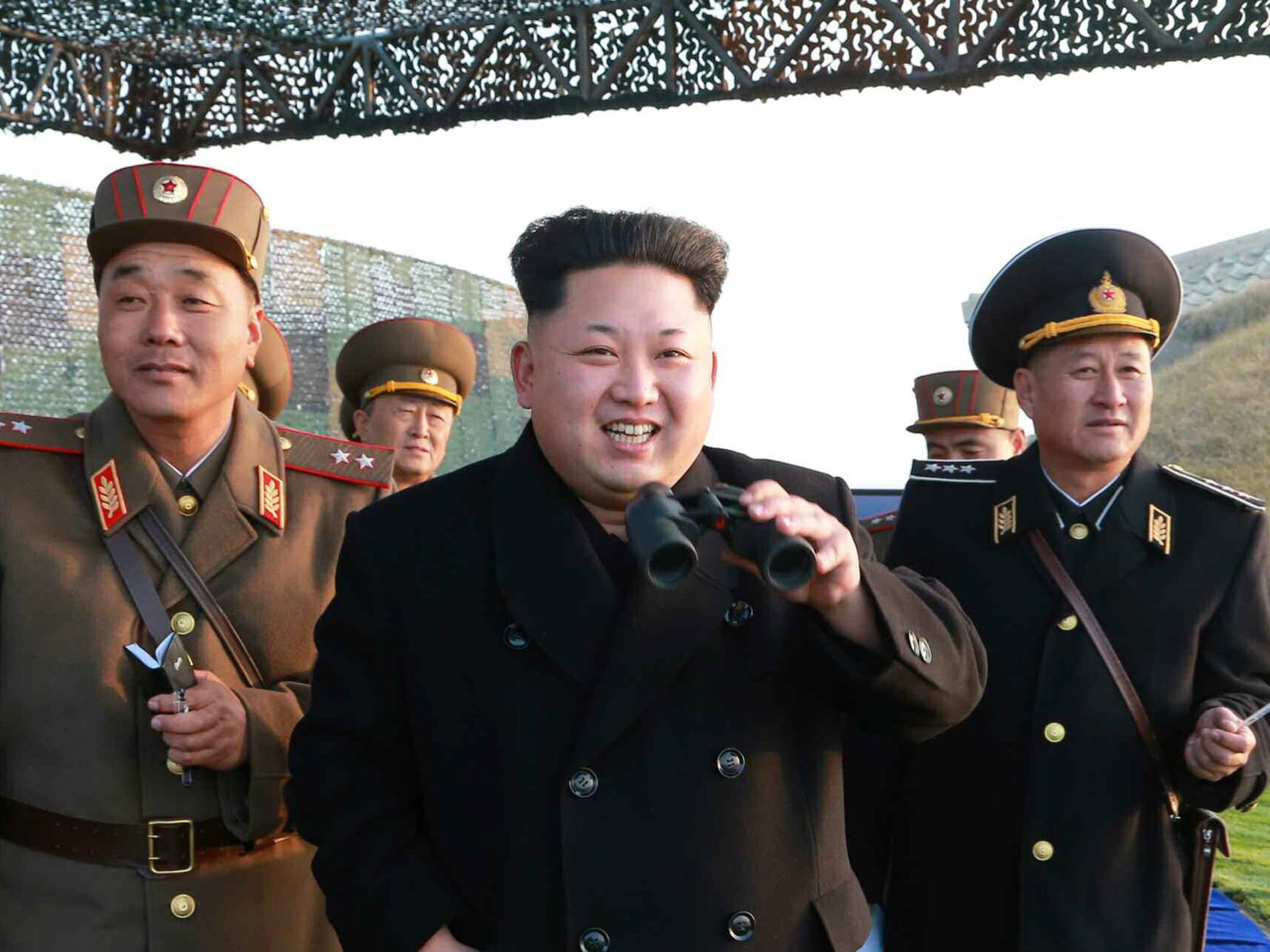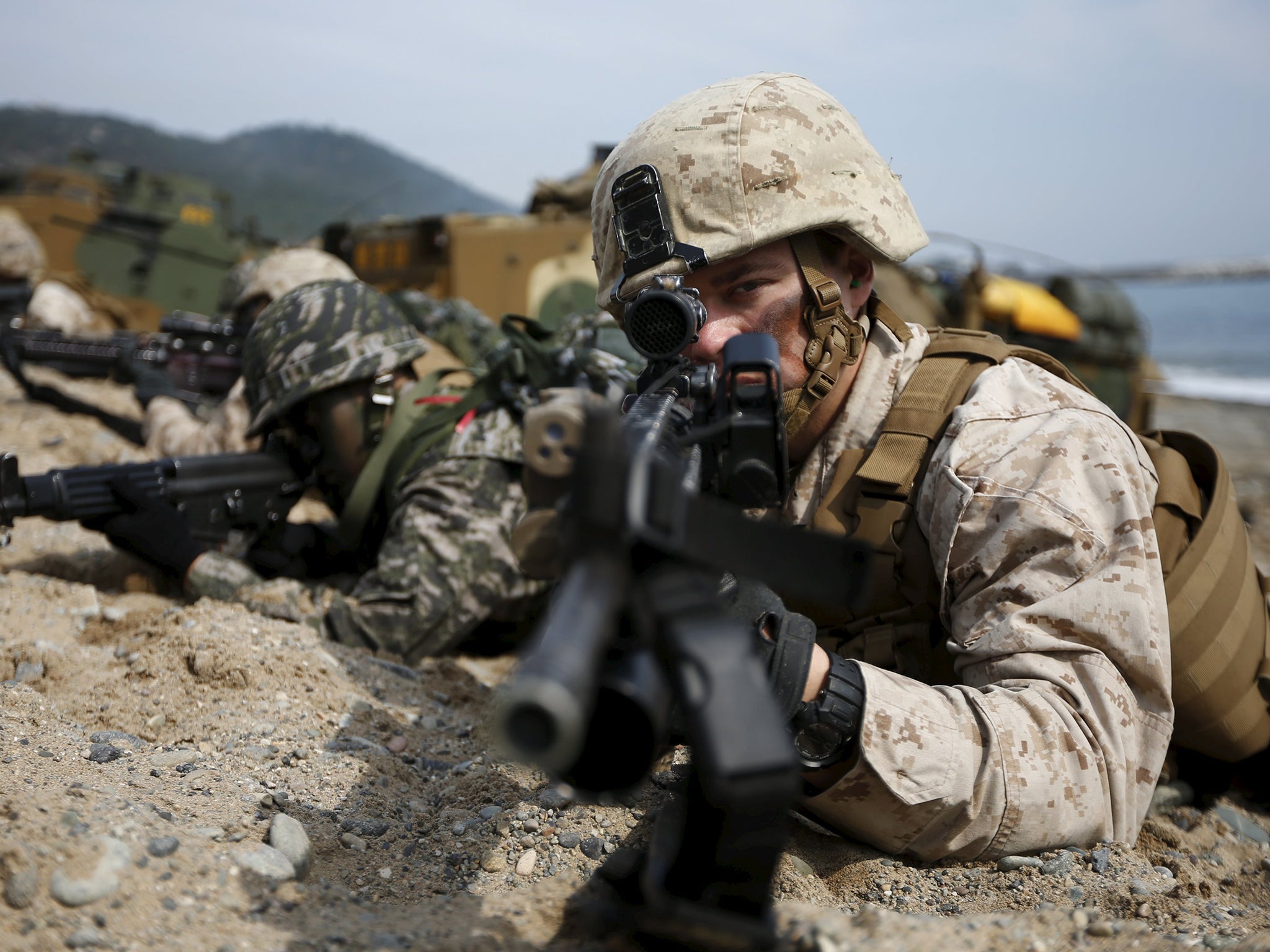Are the US and South Korea really planning to assassinate Kim Jong-un?
The Big Question: Joint military exercsies are reportedly incorporating a 'beheading mission' against the North Korean leader

Your support helps us to tell the story
This election is still a dead heat, according to most polls. In a fight with such wafer-thin margins, we need reporters on the ground talking to the people Trump and Harris are courting. Your support allows us to keep sending journalists to the story.
The Independent is trusted by 27 million Americans from across the entire political spectrum every month. Unlike many other quality news outlets, we choose not to lock you out of our reporting and analysis with paywalls. But quality journalism must still be paid for.
Help us keep bring these critical stories to light. Your support makes all the difference.
Why are we talking about this now?
Massive joint U.S.-South Korea military exercises are a spring ritual on the Korean Peninsula guaranteed to draw a lot of threat-laced venom from Pyongyang. This time, not only are the war games the biggest ever, but the troops now massed south of the Demilitarized Zone have reportedly incorporated a new hypothetical into their training: a "beheading mission" against Kim Jong-un himself.
It's the kind of option military planners tend to consider but almost never use. Neither the U.S. military nor South Korea's defense ministry has actually said it is part of the Key Resolve-Foal Eagle exercises that began this week and will go on for about two months.
But Pyongyang, already feeling the squeeze of new sanctions over its recent nuclear test and rocket launch, is taking a plethora of "beheading mission" reports from the South Korean media very seriously. That goes a long way toward explaining why its own rhetoric has ratcheted up a decibel - even by its own standards of bellicosity. It could also explain some subtle rejiggering afoot in the North's military strategy.
What is a beheading operation?
That's what the North and South Korean media have been calling it. The military prefers to call them decapitation strikes. But, by whatever name, it's hardly a new concept.
They are targeted attacks to eliminate an adversary's leader, or leaders, in an attempt to disrupt or destroy its command chain as soon as a crisis breaks out or appears imminent. They are seen as particularly effective against enemies with a highly centralized command focused on a small group, or one leader. With the leader out of the way, the thinking goes, it's a lot easier to take the rest of the enemy's forces down - or at least keep them from maintaining a coordinated and sustained offensive.
North Korea is a prime example of such an adversary.
The U.S. has used such strikes, often employing drones, to take out key figures in terrorist groups. Pyongyang tried one on South Korean President Park Chung-hee, current President Park Geun-hye's father, at his residence in 1968. So it's no surprise to anyone - especially Pyongyang - that Washington and Seoul would consider such an option if a war were to break out in Korea. That they wouldn't publicly trumpet training for it is also par for the course. And, officially, they haven't.
All we really know is Washington and Seoul agreed last summer on a new plan for how to train for and deal with a major North-South crisis. It's called OPLAN 5015. The "O" stands for operation. Officials have not announced details of how the new OPLAN - which, like all OPLANs, is classified - differs from the previous one.
What have reports been saying?
Since about June, when the new plan was signed, South Korean media have been reporting the new operation plan includes pre-emptive and decapitation strikes. More has come out since the North's nuclear test in January and rocket launch last month, as Seoul's government has tried to underscore its tough stance vis-a-vis Pyongyang.
According to South Korea's Yonhap news agency, the Key Resolve-Foal Eagle exercises will include training and simulations of surgical, pre-emptive strikes on nuclear and missile sites, along with training for a "beheading operation" aimed at removing Kim Jong-un and toppling his government in the event of a war. It has also reported that another set of exercises, now being held by U.S. and South Korean marines, features training for amphibious landings on North Korean shores and, again, attacks on North Korea's leadership.
The reports have generally been thinly sourced or anonymously reported. They have not given any details about how the troops would train for such attacks, though the presence of U.S. special operations units has been noted as ominous.
North Korea, meanwhile, has been almost theatrically apoplectic over the ink being spilt that its leader has a target on his back.
The Supreme Command of the Korean People's Army issued a statement late last month calling a decapitation plan the "height of hostile acts." Warning the doom of the U.S. has been sealed, it said the North's weaponry is "ready to open fire." The day the exercises began, the North's Minju Joson daily said "a historical moment has just come" and its enemies "will sustain the bitterest defeat" from the North's "ground, naval, underwater, air and cyber warfare means, including nuclear strike means."
What is behind the bluster?
Potentially, quite a lot.
North Korea has increasingly shifted its military toward "asymmetrical" warfare tactics that involve surprise, stealth or other means to gain an outsized advantage against a bigger, better-equipped enemy. Its focus on cyber, special forces and nuclear weapons are classic examples.
A decapitation strike could potentially neutralize all of that. Somebody needs to call the shots.
Its long-held ace in the hole, the threat of a massive artillery attack that would devastate Seoul, has also lost some of its credibility. Some experts believe its weaponry has grown older and less reliable. Seoul, meanwhile, has been testing new missiles with precision-strike and bunker-buster capabilities - exactly the kind of weapons that could figure into a decapitation strike.

Never one to roll over under pressure, the North last week made quite of a show of its latest answer to that problem: a large-caliber, multiple-launch rocket system with a range some experts believe could allow it to be positioned out of reach of U.S. or South Korean counterattacks and fire projectiles hard to intercept with missile defense systems.
It is conceivable the North could design nuclear-armed shells for such a weapon.
Even before the current media barrages, experts have been seeing an "action-reaction" cycle fanned by the North's fears of a decapitation strike and signs Seoul and Washington are at least considering the option, according to Jeffrey Lewis, director of the East Asia Nonproliferation Program at the James Martin Center for Nonproliferation Studies of the Middlebury Institute of International Studies at Monterey, in California.
"The appearance of a new long-range artillery system that is specifically linked to North Korean fears about decapitation strikes deserves our attention, even if the possibility of nuclear armament is only hinted at," he wrote in a recent analysis for the influential 38 North website. "Far more attention needs to be paid to North Korea's evolving nuclear doctrine, on the one hand, and South Korea's development of conventional doctrines that involve pre-emption and decapitation on the other."
Associated Press
Subscribe to Independent Premium to bookmark this article
Want to bookmark your favourite articles and stories to read or reference later? Start your Independent Premium subscription today.
Join our commenting forum
Join thought-provoking conversations, follow other Independent readers and see their replies
Comments